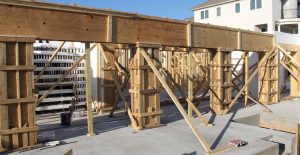Knowledge points about plywood, series four.
- What are the methods of liquid sizing plywood veneer?
(1) Roller sizing: simple operation, low efficiency, not easy to automate.
(2) glue: uniform sizing, good quality, high efficiency. Automatic equipment is required.
(3) extruding: clean, save glue material, but easy to block export, slow production speed.
(4) spray glue: pressure spray glue quality is good, high efficiency. - What are the main factors affecting the quality of plywood veneer?
(1) Different performance indexes of adhesives are different;
(2) Adhesive properties are different with different amount of glue;
(3) the nature of the gluing material;
(4) Bonding process: reasonable aging time and hot pressing process parameters are conducive to bonding quality. - Briefly describe the principles for assembling plywood blanks.
(1) The principle of symmetry requires that the veneers on both sides of the symmetrical center plane should be symmetrical with each other in terms of tree species, veneer thickness, layer number, veneer manufacturing method, fiber direction and water content of veneer. To ensure the structural stability of plywood, will not produce deformation.
(2) The principle of texture arrangement between layers (texture staggered principle) the fiber direction of two adjacent layers of veneer is perpendicular to each other.marine plywood thicknesses
(3) Odd number layer principle
Refers to the composition of plywood veneer number is odd, group blank in order to follow the principle of symmetry, texture staggered principle, generally comply with the principle of odd layers.
In addition, it refers to the premise of ensuring the total thickness of plywood, can use different layers to achieve. That is, the total thickness of plywood is equal to the thickness of each layer of veneer and (regardless of compression rate), now the production of thick core plywood in line with the principle. - What is plywood aging? Try to state the purpose of the presentation.
Definition: gelated veneer aged for a period of time, called aging (release). It can be divided into open aging and closed aging. Open it refers to the sizing veneer placed for a period of time, and then the blank group; Closed aging refers to the aging of veneer group after sizing.
Aging purpose: to make part of the water in the glue evaporate or penetrate into the veneer, increase the viscosity, increase the degree of polymerization, avoid hot pressing liquid extrusion or penetrate into the veneer, produce lack of glue or through glue, in order to improve the bonding strength 20mm marine plywood price. - Briefly describe the purpose of plywood preloading.
(1) Reduce the thickness of the slab, so as to reduce the opening of the hot press plate;
(2) Can appropriately improve the hot pressing speed, shorten the hot pressing period, improve the productivity of the press;Request a Quote
(3) Increase the strength of slab, so as to facilitate the transportation of slab and realize the operation without pad; - What is plywood hot pressing? The purpose and method of hot pressing plywood are described.
Hot pressing: The slab is made into a plate of strength, density and thickness by heat and pressure in a certain period of time.
Hot pressing: the adhesive is solidified and the slab is pressed to the required thickness 7mm marine ply.
According to time characteristics or slab movement: periodic hot pressing and continuous hot pressing.
According to the pressure mode: flat pressure, extrusion and roller pressure. Flat pressing is commonly used in plywood production.
Combined with each other, the above methods can become a variety of hot pressing methods, but the current commonly used is the contact pressure cycle hot pressing, foreign equipment has the use of continuous hot pressing. - What are the hot pressing temperature, hot pressing pressure and hot pressing time of plywood? Usually the hot pressing temperature refers to the temperature of the hot pressing plate, and is regarded as a heat source. Hot pressing time refers to the time when the pressure rises from the complete closure of the platen until the pressure drops to zero and the platen opens completely.
The hot pressing pressure is expressed by the maximum pressure per unit area of the slab. - It is known that the unit pressure of plywood is 1.0mpa, and the width of slab is 2500*1270mm. There are four oil cylinders in the hot press, whose diameter is 320mm, and the pressure loss coefficient is 0.9 to test the gauge pressure.
P = 4 pa/P = P * a. table/(PI) d / 4 d * * n * k = 1 * 250 * 127 / (PI * 32 * 4 * 0.9/4) = 10.97 Mpa - What is post-processing of plywood? Describe the purpose of trimming.
Definition: post-processing is the process of repairing the defects in the hot pressing process of the sheet metal and consolidating and improving the performance of the sheet metal according to the needs of the subsequent production process. Cutting purpose: to remove the loose part of the four sides of the plate, so that the length and width of the plate size to meet the requirements. - What is plywood sanding? Briefly describe the purpose of sanding.
Definition: Sanding is one of the most basic practices currently used in the wood-based panel industry to improve the surface quality of panels kitply marine plywood.
Objective: To reduce the thickness tolerance of the plate; Remove the precuring layer on the plate surface; Improve plate surface quality grade. Request a Quote

